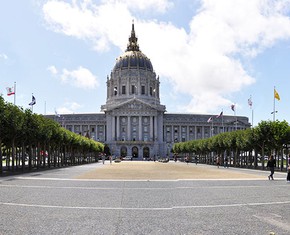The views expressed in our content reflect individual perspectives and do not represent the authoritative views of the Baha'i Faith.
Prophecy is symbolic, not literal. Who says so? Eusebius, bishop of Caesarea, the “Father of Church History”—that’s who!
Eusebius criticized Papias, bishop of Hierapolis—an earlier church father, who interpreted the Book of Revelation literally—by plainly and authoritatively stating:
He says that after the resurrection of the dead there will be a period of a thousand years, when Christ’s kingdom will be set up on this earth in material form. I suppose he got these notions by misinterpreting the apostolic accounts and failing to grasp what they had said in mystic and symbolic language. For he seems to have been a man of very small intelligence, to judge from his books. – “Beyond Genre: The Expectations of Apocalypse,” in The Reality of Apocalypse: Rhetoric and Politics in the Book of Revelation, edited by David L. Barr, p. 71.
So, the prophecies of the Book of Revelation were set forth “in mystic and symbolic language.” The Baha’i teachings, which refer to prophecy in similar terms, also state that prophecies are symbolic—and explain why. Here’s the reason:
Know verily that the purpose underlying all these symbolic terms and abstruse allusions, which emanate from the Revealers of God’s holy Cause, hath been to test and prove the peoples of the world; that thereby the earth of the pure and illuminated hearts may be known from the perishable and barren soil. From time immemorial such hath been the way of God amidst His creatures, and to this testify the records of the sacred books. – Baha’u’llah, The Book of Certitude, p. 49.
So “mystic and symbolic” prophecies are a test of understanding, spiritual purity and perception. Although, generally speaking, prophecies are what they purport to be, they are not always as they appear to be.
Consider this: If a prophecy, in order to be fulfilled, requires that something impossible must happen, then the prophecy is literally impossible, absent suspension of the laws of nature. Since genuine prophecy is meant to come true, at some point in time, the prophecy itself has to be possible, not impossible.
So common sense rejects any interpretation of prophecy that would require totally miraculous events, to the exclusion of other possible interpretations. In other words, if a prophecy defies the imagination, then the prophecy must be reimagined in more realistic terms.
Natural convulsions of the heavens and the earth in prophecy refer to spiritual events, within a symbolic universe, across a metaphysical landscape that only the inner eye can metaphorically discern.
Once we understand prophecy as primarily spiritual, and therefore symbolic, then there is a far greater likelihood that the prophecy is capable of meaningful fulfillment. Not only that, but the prophecies become far richer and deeper. By bypassing their apparent surface meaning, prophecies transform into something far more meaningful.
Professor Barr further explains that the Book of Revelation (also known as the “Apocalypse of St. John the Divine”) is symbolic by design:
I have long argued, and become ever more convinced, that John’s Apocalypse is a symbolic transformation of the world … in two senses. John transforms the world through symbols, and John transforms symbols through story. – David Barr, The Reality of Apocalypse: Rhetoric and Politics in the Book of Revelation, p. 206.
So what about popular interpretations of the Book of Revelation? Professor Barr comments on this fictional and phantasmic phenomenon of literal—and yet symbolically “political”—interpretation that has beguiled the public imagination:
Now without question, this world in front of the text can distort our reading. We have a whole series of best-selling novels called the “Left Behind” series, imagining what will happen on earth after the “Rapture.” This apparently makes good sense to people even though Revelation makes no mention of a rapture, and in fact the notion was invented only in the nineteenth century. But because it has become such a part of our world in front of the text, people see it in the text. In the same way, most of my students are so immersed in readings like Hal Lindsay’s The Late Great Planet Earth that they think that that is what the story says. But of course it is not. While claiming to be a literal reading, this modern interpretation engages in the most outlandish allegorization of the text: the Beast is Russia (or China), the Ten Kings are the European Union, Babylon was, according to Lindsey, a code for a “one world religion.” – Ibid., p. 73.
Professor Barr’s point is worth considering. If popular interpretations of the Book of Revelation are so prone to error, then it makes perfect sense to put those aside and to approach prophetic interpretation open-mindedly.
Take, for instance, the vision of the “New Jerusalem” as described in the Book of Revelation. The New Jerusalem is symbolic in description and spiritual in nature. Not only is the future advent of the New Jerusalem of great significance—appearing, as it does, at the end of time, i.e. at the climax of salvation history (which Baha’is term “Progressive Revelation”)—the New Jerusalem, surprisingly and uncharacteristically, does not include the Jerusalem Temple:
Revelation 21:9–22:9 is dominated by the guided tour that the interpreting angel gives to the author. The passage begins in 21:9–10 when one of the seven bowl angels offers to show John “the bride, the wife of the Lamb,” clearly a metaphor for the New Jerusalem, which is in turn is a metaphor for the people of God. … The New Jerusalem is mentioned once earlier in the Apocalypse, in 3:12, where it is a metaphor for the full attainment of salvation: “I will write on you [the one who conquers] the name of my God, and the name of the city of my God, the new Jerusalem that comes down from my God out of heaven.” While the expectation of an eschatological temple (the core, after all, of Ezekiel’s vision in Ezek 40–48) would be traditional in early Judaism, a new and unexpected element in John’s vision is his insistence that there is no temple in the eschatological Jerusalem (21:22–27). – David E. Aune, “Apocalypse Renewed: An Intertextual Reading of the Apocalypse of John,” in The Reality of Apocalypse: Rhetoric and Politics in the Book of Revelation, p. 67.
In the next article in this “Figuring Out Prophecy” series, we’ll explore the Baha’i principle of the harmony of science and religion as applied to contemporary historical interpretation of the Book of Revelation. Stay tuned!
















Comments
Sign in or create an account
Continue with Googleor